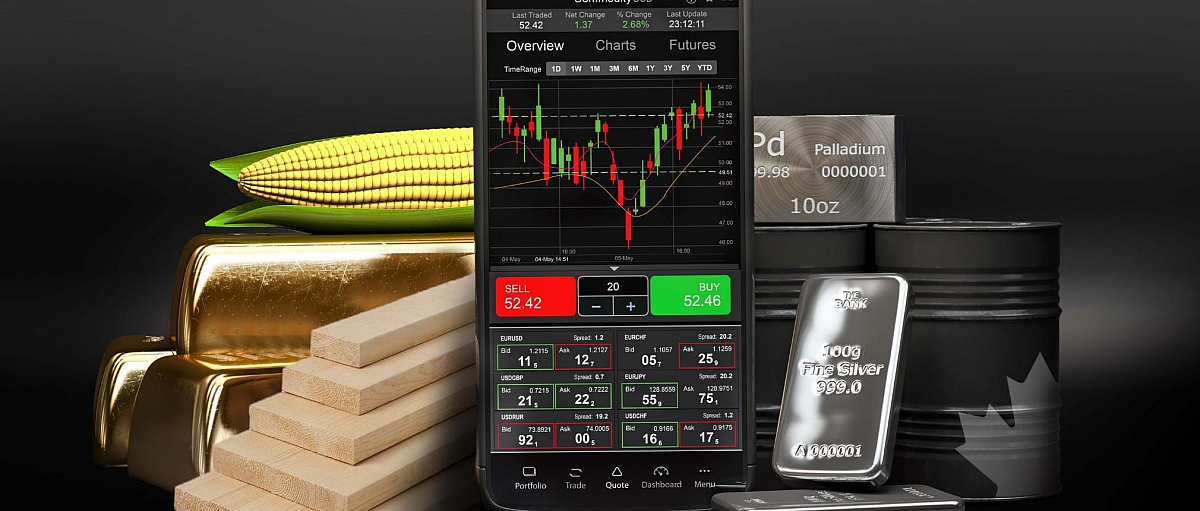New Research Identifies the Challenges of Investing in Commodities
Canada relies heavily on commodity markets, from wheat to lumber, from precious metals to energy. These markets attract investors seeking to diversify their portfolios and minimize the impact of inflation. But do the benefits of investing in commodity markets outweigh the risks?
In recent years, investors have been frustrated by distortions in prices between “spot” and “future” markets. A study published in Energy Economics co-authored by University of Ottawa professor Fabio Moneta identifies some of the challenges of investing in commodities. Moneta offers some practical insights below to help investors better understand the commodity markets and make decisions that contribute to a more resilient financial system and a more prosperous economy.
Avoiding using the wrong benchmark
“We decided to focus on oil futures markets to better understand the challenges of one of the most traded and perhaps one of most controversial commodities,” says Moneta, an associate professor at uOttawa’s Telfer School of Management.
To measure the performance of oil investments, investors often use the performance of “spot oil” as benchmark. Spot oil refers to assets traded based on contracts that reflect the current cash market price for oil. However, to directly invest in spot oil, an investor would have to buy physical oil and store it somewhere, at great cost. Tracking spot oil is thus not a practical approach.
Using spot oil as benchmark also creates challenges for investors who trade oil futures, which are contracts to buy or sell an asset at a predetermined price on a specified future date.
Because oil futures contracts don’t perfectly mimic spot oil returns, using spot oil as a benchmark to track oil futures causes a tracking error. “All exchange-traded products that invest in oil have this error,” explains Moneta.
“Contango”: Buying high and selling low
To better understand the source of this error, Moneta and University of San Francisco professor Ludwig B. Chincarini delved into the recent increase in capital allocated to oil investment and how this may have created distortions in the futures market.
The authors suggest that this increase in capital is mainly driven by commodity index investing, investing in products that track commodities, such as exchange-traded funds and other exchange-traded products that allow market players to invest in oil futures.
Moneta and Chincarini show that futures investing underperformed spot oil from 2006 to 2017, primarily because of an increase in “contango,” where the futures price is higher than the spot price. Many commodity-investment products like oil funds track near-term futures contracts and regularly convert, or “rebalance,” into further-dated contracts. But with contango, rebalancing into further dated contracts leads to a “buy high and sell low” strategy that hurts investors’ returns.
Two challenges: “Financialization” and “crowding”
The research team evaluated whether an increase in contango in oil futures markets is also heightened by the “financialization” of commodity markets, that is, an increase in financial capital investments allocated to the commodity markets, something Moneta has been studying in a Social Sciences and Humanities Research Council-funded project.
Now, Moneta and Chincarini argue that this financialization process may intensify “crowding,” when investors act in similar ways, and create distortions in the oil futures market. A large increase in commodity index investing creates an excessive demand in the futures markets.
While commodities like oil have become very popular among investors, these investments affect the price of oil futures. They also cause futures returns in oil to deviate from the returns of spot oil, creating a supply and demand imbalance.
“When there is a surge in demand without an increasing surge in the number of market players who wish to sell oil futures contracts (supply), prices are likely to increase. There needs to be an immediate pick up in supply or an increase in trading activity between the spot and futures markets,” explains Moneta.
Take, for example, the beginning of the pandemic. When public health measures led to a drop in demand, oil storage facilities across the globe were quickly filled. Investors strove to sell oil futures contracts and replace them with longer maturity contracts to keep their hand in oil, but, without storage space, many market players had no incentive to buy contracts. On April 20, 2020, the price of near-term oil futures collapsed to -$37.63.
Lessons for commodity market investors
Even though the researchers focused on oil futures, their findings can be extended to other commodity markets. Moneta shared some recommendations to help commodity investors make better investment decisions:
- Investing in commodities may not as beneficial as some believe. These markets may offer opportunities for diversification but appear to be more exposed to the equity market.
- Retail investors can get exposure to commodity markets by investing in exchange-traded products. But they should be aware of the issues associated with commodity futures investing.
- Because futures markets provide important information used by market players like producers and corporations that trade commodities, market distortions can have critical economic consequences.
- As for oil futures, investors and investment managers should be aware that spot oil may not be an appropriate benchmark. Additionally, the fees associated with these investment products reduce their net performance. Investment managers and investors should rely on spot oil plus storage costs or just a benchmark of oil futures.
- The divergence in oil futures from the underlying spot oil observed from 2006 to 2017 teaches us that investors should monitor the contango and use it as an indicator whether to invest in oil futures.

Dr. Moneta is an associate professor at the Telfer School of Management, where he is also a Royal Bank of Canada fellow of finance. His research interests include investments, institutional investors, trading behaviour, mutual fund performance and empirical asset pricing. Learn about Moneta’s work.

Dr. Chincarini is a professor at the School of Management at the University of San Francisco. His research interests include investments, trading, crowding and empirical asset pricing. Learn more about Chincarini’s work.


